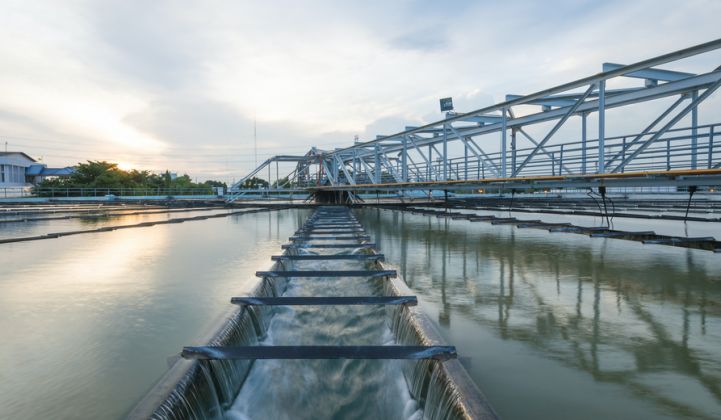Water and energy are inextricably linked, particularly in California. The state uses about 20 percent of its electricity to operate its aqueducts, irrigate its farms, and treat and deliver water to millions of residents.
Adding flexibility to that energy use could, in turn, help the power grid deal with its own emerging needs -- to manage the influx of solar and wind power, and make up for the closing of nuclear and natural-gas-fired power plants.
That’s the idea behind a 7-megawatt, 34-megawatt-hour energy storage project announced this week by Advanced Microgrid Solutions and the Irvine Ranch Water District (IRWD). The two will install Tesla’s lithium-ion batteries at 11 different sites across the Orange County region, and use them to reduce their draw on the grid when utility Southern California Edison needs the help.
It’s not Southern California’s biggest behind-the-meter battery project by a long shot. Nor is it the biggest for Advanced Microgrid Solutions, which is already doing a 50-megawatt project for SCE, along with several others in the state. But it does represent the largest battery deployment for a water district, according to Tuesday’s press release.
And while many water districts are behind the curve in energy management, IRWD has done a lot of work to figure out just how much power it’s using across its system. Last year it commissioned a study to determine the average energy intensity of its overall operations, measured in kilowatt-hour per acre-foot of water delivered, as well as the energy intensity of each of its facilities.
This data is going into the new project, which will target three water treatment and recycling plants, a deep aquifer treatment system, a groundwater desalter facility and six high-energy pumping stations. Some of them can be scheduled to operate at times of plentiful off-peak electricity, but much of it has to keep running throughout the day, including the late summer afternoons when grid demand typically reaches its peak.
Batteries can store power during off-peak times, and then discharge it to reduce peaks, all without interrupting operations at these must-run facilities. That’s what differentiates the projects AMS has done from traditional demand response, which relies on load reduction to meet grid needs.
It’s also something that needs to be managed at utility scale -- and preferably, backed by utility power-purchase agreements, like the 10-year contract that AMS has signed with SCE for this new project. Under that agreement, AMS will design, finance, install and operate the energy storage systems as an aggregated whole, serving the utility’s peak reduction needs.
SCE has already procured hundreds of megawatts of storage, efficiency and demand response resources, through its 2014 long-term procurement proceeding and subsequent contracts, aimed at helping it meet its future capacity needs. Much of it has been in Orange County, a region that’s facing future power shortfalls and instability due to the closing of the San Onofre nuclear power plant, and the expected closing of several ocean-cooled natural gas power plants over the coming years.
Adding the locked-in value of long-term PPAs can help pay for broader energy efficiency improvements, AMS CEO Susan Kennedy noted in the press release. The San Francisco-based startup, which has nearly 100 megawatts of projects contracted and a $200 million financing deal with Macquarie Capital, expects it will save the district about $500,000 a year in energy costs. Water district operators will also have access to the system, which will provide real-time visibility and control over their largest energy-using assets.
The water-energy nexus -- a term coined by the California Energy Commission -- is getting more attention in a state gripped by an emergency-level drought. State legislation has authorized the CEC to invest funds in technologies that can help reduce losses from leaking pipes, reservoir evaporation and other points within the state’s water system, and bring new data and insight into conservation efforts.
At the same time, the energy sector is facing its own water crisis of sorts, driven by the fracking industry’s insatiable thirst. This, in turn, is likely to drive increased investment in water-related technologies, according to a recently updated report from Wood Mackenzie (which owns GTM) and Verisk Maplecroft.



